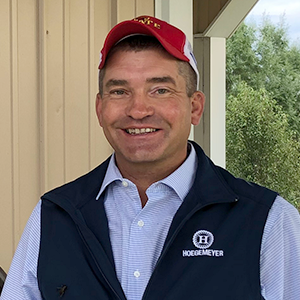Clean Fields Are Important to Iowa Farmer for Many Reasons
It’s unanimous: Farmers don’t like weeds. But Kyle Schultz of Iowa sees weed control as more than the potential for higher yield. He sees it as a reflection on his farming talents.
“I hate a dirty field,” Schultz says. “My nature is, when I see a weed, I go get it.”
Ask him why a clean field is important, and he explains that it influences neighboring farmers and landowners.
“I want them to see that I’m taking care of my land,” he says. “I want landowners to want me farming their land.”
Schultz – like most of his neighbors – is battling marestail and waterhemp. Lately, marestail has been particularly stubborn.
“A couple of years ago, I sprayed a field with glyphosate four times and the weeds kept coming back,” he says. “We need better postemergence herbicide options.”
This year, Schultz is trying Enlist E3® soybeans for the first time on his farm.
“I like the modes of action and the potential for improved weed control,” he says. “We need it.”
Schultz dodged much of the wet weather many other folks experienced this spring. He was able to get corn and soybeans planted by May 14.
After planting, he used a preemergence treatment of Enlist One® herbicide and residual herbicides. He reports that program is holding back broadleaf weeds for now.
“The first Enlist E3 field I planted is phenomenal,” he says. “I planted the other one three days later and it’s not growing quite as fast, but it still looks good. We just need more heat and sunshine.”
He plans to follow with either Enlist One or Enlist Duo® herbicides, but he’s waiting to see what he thinks the crop will need.
“All options are on the table,” Schultz says. “Enlist One. Enlist Duo. I’m excited about the whole program.”
He appreciates the Enlist™ weed control system’s flexibility.
“I’m not going into a fight with one hand tied behind my back,” Schultz explains. “I can come out swinging with both hands. We can use this approach or that approach. That’s key to me.”
He’s aware that success comes from following the herbicide label. He’s not worried about keeping these products on target.
“With this package, I have no concerns – as long as I follow the label,” he adds.
He’s talking with neighbors so they’ll know where he’s using his herbicide technologies.
“They’re all aware of where we planted the Enlist E3 soybeans,” Schultz says. “They’re excited to see what they do and see how they yield at the end of the season. We put them along a road where other growers can see them. We have our own crops on the other three sides.”
He’s hoping for clean, weed-free fields that will impress the neighbors and pave the way for higher yield.
